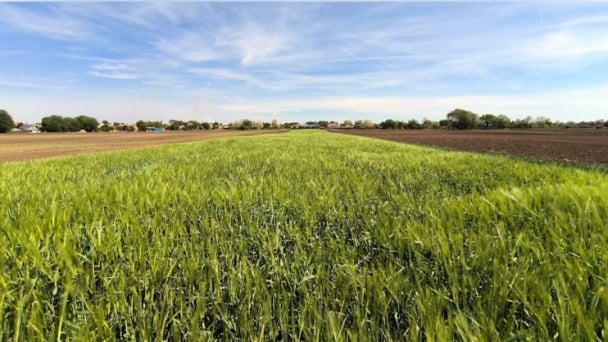June 19, 2025 | 05:49 GMT +7
June 19, 2025 | 05:49 GMT +7
Hotline: 0913.378.918
June 19, 2025 | 05:49 GMT +7
Hotline: 0913.378.918

Ms. Heather Sohl, Chief Advisor on Wildlife and Tiger Trade Leader, WWF, presents on the role of captive tigers in the global illegal tiger trade.
The Technical Dialogue on the Framework for the Management of Tiger Facilities in Vietnam, was hosted by the Forest Protection Department and supported the U.S. Agency for International Development (USAID) through the Saving Threatened Wildlife project, implemented by the Management Board for Forestry Projects of the Ministry of Agriculture and Rural Development (MARD), and WWF.
Tigers are globally endangered and are protected both nationally and internationally under the Convention of International Trade in Endangered Species of Wild Fauna and Flora (CITES).
CITES requires all member states to implement measures to restrict captive tiger populations to a level supportive only to conserving wild tigers and to prevent breeding for trade in their parts and derivatives.
In Vietnam, according to the Forest Protection Department, approximately 388 tigers are kept in zoos, safaris and under private ownership. In 2020, the Prime Minister assigned MARD to organize an assessment of the pilot and the status of the five private facilities allowed to keep/breed tigers for conservation purposes. Based on these assessments, the development of a National Framework for the Management of Captive Tigers has been proposed.
“Implementing Directive No. 29/CT-TTg (July 23, 2020) issued by the Prime Minister on Some urgent Solutions to address management of wildlife species, the Forest Protection Department has coordinated with relevant units to conduct a survey and evaluation of the current situation of tiger farming as well as tiger management. We realized that there were remaining difficulties and challenges for tiger facilities as well as management and supervision of the authorities.
Based on these assessments, the development of a National Framework for the Management of Captive Tigers has been proposed with several new solutions such as: managing and monitoring tigers using DNA technology, striped images, microchips, etc. to serve the purpose of origin traceability; complete relevant legal policies; strengthen the effectiveness of law enforcement, prevent and stop the illegal trade, captivity, and use of tigers’ parts and derivatives,” says Mr. Bui Chinh Nghia, Director of the Forest Protection Department.
Mr. Nghia believes that this timely dialogue will contribute ideas to the Forest Protection Department to complete the National Framework for the Management of Captive Tigers in the coming time, ensuring compliance with the provisions ofCITES, Vietnamese law and the practical situation.

Mr. Bui Chinh Nghia, Director of the Forest Protection Department (Ministry of Agriculture and Rural Development) delivered the opening speech.
Mr. Do Quang Tung, Director of the Management Board for Forestry Projects (MARD), says, “Tigers are an endangered, precious and rare species with a very high risk of extinction due to illegal hunting, trading, raising and breeding. Therefore, they must be protected under International Conventions and National Law. Viet Nam has been working to show our commitment in the conservation of tigers, especially in captive facilities. With the contribution of national and international experts, we are looking forward to the completion of the Framework for the Management of Captive Tigers in Vietnam.”
The two-day technical dialogue provided participants with information on the state of captive tigers in Vietnam and the measures necessary to improve their management, and compliance with CITES.
Examples and discussion of the current status and practical experience of managing captive tigers in other countries were also highlighted. Participating in the workshop, delegates enthusiastically discussed and provided professional expertise to strengthen the management of captive tiger facilities and minimize the risk of trafficking and/or leakages of tigers and tiger products into illegal markets.
Some key opinions raised by many delegates including building a nationwide tiger management system with individual DNA profiles and stripe patterns, providing a definition of keeping and breeding tigers for conservation purposes, and ensuring husbandry and welfare standards for captive tigers. Following the dialogue, the Framework will be revised and submitted to MARD for consideration.
“The management of captive tigers requires the collective effort from Government Agencies, facility owners and partners from international organizations. This was well reflected in the diversity of participants from different sectors joining the Technical Dialogue today. We welcome the opportunity to have expert input for the improved management of captive tigers in Vietnam,” said Ms. Michelle Owen, Chief of Party - Saving Threatened Wildlife project.
Translated by Quynh Chi
![Turning wind and rain into action: [9] Digitizing hydrometeorological data in response to climate change](https://t.ex-cdn.com/nongnghiepmoitruong.vn/608w/files/news/2025/06/17/z6704423696987_15fd32ffc26d590d204d520c9dac6786-nongnghiep-165943.jpg)
(VAN) Farmers have begun accessing hydrometeorological applications to adjust their cropping schedules, aiming to ensure productivity and adapt to climate change.
![Turning wind and rain into action: [8] Real-time salinity detection and early warning technology](https://t.ex-cdn.com/nongnghiepmoitruong.vn/608w/files/news/2025/06/17/z6704423696987_15fd32ffc26d590d204d520c9dac6786-nongnghiep-151127.jpg)
(VAN) Thanks to the integration of modern hydrological-hydraulic models, remote sensing technologies, and artificial intelligence, the accuracy of hydrological forecasting has significantly improved.
![Turning wind and rain into action: [7] Early disaster warnings help marine farmers minimize losses](https://t.ex-cdn.com/nongnghiepmoitruong.vn/608w/files/news/2025/06/17/z6704423696987_15fd32ffc26d590d204d520c9dac6786-nongnghiep-142942.jpg)
(VAN) In recent years, thanks to early disaster warnings and forecasting, marine farmers in Khanh Hoa province have been able to reduce risks and losses, thereby improving production efficiency.
![Turning wind and rain into action: [6] ‘Four on-the-spot’ disaster management software](https://t.ex-cdn.com/nongnghiepmoitruong.vn/608w/files/news/2025/06/17/e5a48259d6a262fc3bb3-nongnghiep-183800.jpg)
(VAN) By simply activating the scenario on the disaster management software, the relevant authorities immediately know how many households need to be evacuated, where to evacuate them to, and by what means of transportation…
![Turning wind and rain into action: [5] Hue applies modern technology in disaster forecasting](https://t.ex-cdn.com/nongnghiepmoitruong.vn/608w/files/news/2025/06/17/z6704423696987_15fd32ffc26d590d204d520c9dac6786-nongnghiep-093938.jpg)
(VAN) In Hue city, modern technology has recently been applied in meteorological and hydrological forecasting and warning, helping to reduce the damage caused by natural disasters.

(VAN) A cutting-edge farming technique being implemented on an experimental ranch in Arizona's Sonoran Desert has already saved a billion gallons of water over five years, according to Civil Eats.

(VAN) Poultry and pig production and the environment can be boosted through enhanced water technology, according to new research.